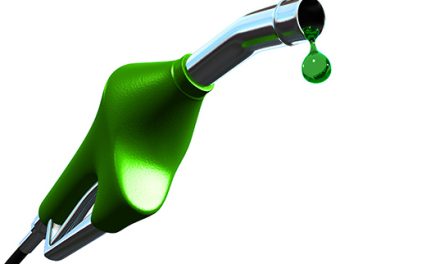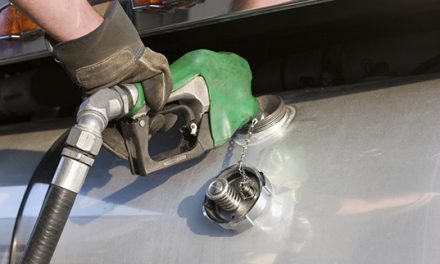Lower Crude Oil Prices Lead to More Idle Rigs
- Fewest drill rigs in service since July, 2011
- Global supply exceeds demand by 1.4 million barrels per day, straining storage
- Domestic crude oil production reached 9.324 million barrels daily
- Natural gas consumption reportedly fell 7.3 per cent in its most recent supply/demand weekly
Sincerely, Alan Levine Chairman, Powerhouse
Table covers crude oil and principal products. Other products, including residual fuel oil and “other oils” are not shown, and changes in the stocks of these products are reflected in “Total Petroleum Products.” Statistics Source: Energy Information Administration “Weekly Petroleum Status Report” available at www.eia.doe.gov
The Matrix
Energy interest groups rooting for higher prices are pointing towards counts of idle drill rigs as evidence that lower prices are the best cure for lower prices. Recent data from Baker Hughes, Inc. showed that 1,019 drill rigs were in operation as of February 20. This was the fewest since July 2011. Since December 5, 2014, 556 rigs have been taken out of service.
Low rig counts are cited as proof that the laws of supply and demand have not been repealed. One bank analysts is quoted, “OPEC giving up on trying to control the price is working. It is having the effect that we would expect, which is a decline in investment and ultimately supply, and somewhat higher demand. We think this change is for good.”
At the same time, however, U.S. production is reaching new highs and supply exceeding demand points to the possibility that the storage capacity in the country may well be soon challenged. There are estimates that global supply is exceeding demand by 1.4 million barrels daily. Another analyst noted, “If you run out of space, prices tend to react a lot more violently to adjust that supply and demand imbalance and that’s what we expect over the next few weeks.” He forecasted both WTI and Brent falling toward $30 a barrel.
As storage grows, futures prices may go further into carry. ULSD, for example, had a price carry of 9.94 cents between the April and January 2016 contracts as of the close on March 6th. If prices fall further, one might expect this differential to rise, enhancing the profit opportunity of holding storage. And on March 6th, ULSD made a new low for March.
Supply/Demand Balances
Supply/demand data in the United States for the week ending February 20, 2015 were released by the Energy Information Administration.
Total commercial stocks of petroleum increased 2.3 million net barrels during the week ending February 27, 2015.
Draws were reported for distillate fuel oil, K-jet, propane, ethanol, and other oils. Residual fuel oil had a moderate gain.
Crude oil supplies in the United States increased to 444.4 million barrels, a build of 10.3 million barrels.
Gulf Coast crude oil supplies rose 5.4 million barrels, increasing regional supply to 219.9 million barrels. Midwest crude oil stocks grew 3.3 million barrels, and West Coast crude oil inventories increased 2.1 million barrels. East Coast and the Rockies had small crude oil stock declines.
Cushing, Oklahoma inventories rose 0.5 million barrels. This puts Cushing storage at 49.2 million barrels according to the week’s report. This was a smaller than expected build but a build nonetheless. Cushing reaching storage capacity could lead to a collapse in crude oil prices. Crude oil inventories in the U.S. are at levels not seen for 80 years, according to the EIA.
Domestic crude oil production rose by 39,000 barrels daily to 9.324 million barrels daily. Crude oil imports averaged 7.4 million barrels per day, a daily increase of 89,000 barrels.
Refineries utilized 86.6 percent of capacity, a decline of 0.8 percentage points.
Crude oil inputs to refineries fell by 130,000 barrels daily; there were 15.11 million barrels per day of crude oil run to facilities. Gross inputs, which include blending stocks, fell 151,000 barrels per day to 15.4 million barrels daily.
Total petroleum product inventories saw a decrease of 8.0 million barrels. Gasoline stocks were unchanged.
Total product demand decreased 122,000 barrels daily to 19.65 million barrels daily.
Demand for gasoline declined 284,000 barrels per day to 8.63 million barrels daily.
Distillate fuel oil lost 1.7 million barrels from supply. Stocks are 123.0 million barrels. National demand was reported at 4.05 million barrels per day during the report week. This was a weekly decrease of 229,000 barrels daily.
Propane stocks fell 4.2 million barrels. There are 55.1 million barrels in storage. Current demand is estimated at 1.8 million barrels per day.
Natural Gas
According to EIA: After surpassing their five-year average two weeks ago, natural gas stocks are now below their five-year average following two weeks of larger than average withdrawals. With a net withdrawal of 228 Bcf for the week, working gas inventories as of February 27 totaled 1,710 Bcf, 492 Bcf (40.4%) higher than last year at this time and 143 Bcf (7.7%) lower than the five-year (2010-14) average. The 228-Bcf net withdrawal reported for the week was higher than both the five-year average and last year’s net withdrawals for the week ending February 27, which were 115 Bcf and 144 Bcf, respectively.
Moderating weather influenced both supply and demand during the report week. EIA estimated supply declined 0.4 per cent, but was, nonetheless, 8.3 percent greater than last year at this time. This reflected a drop in supplies from Canada of 5.7 per cent from the preceding week.
Consumption fell too. EIA reported a weekly drop in demand of 7.3 percent week on week. Residential/commercial use fell 10.9 per cent week over week and natural gas used for power generation dropped 3.7 percent.










